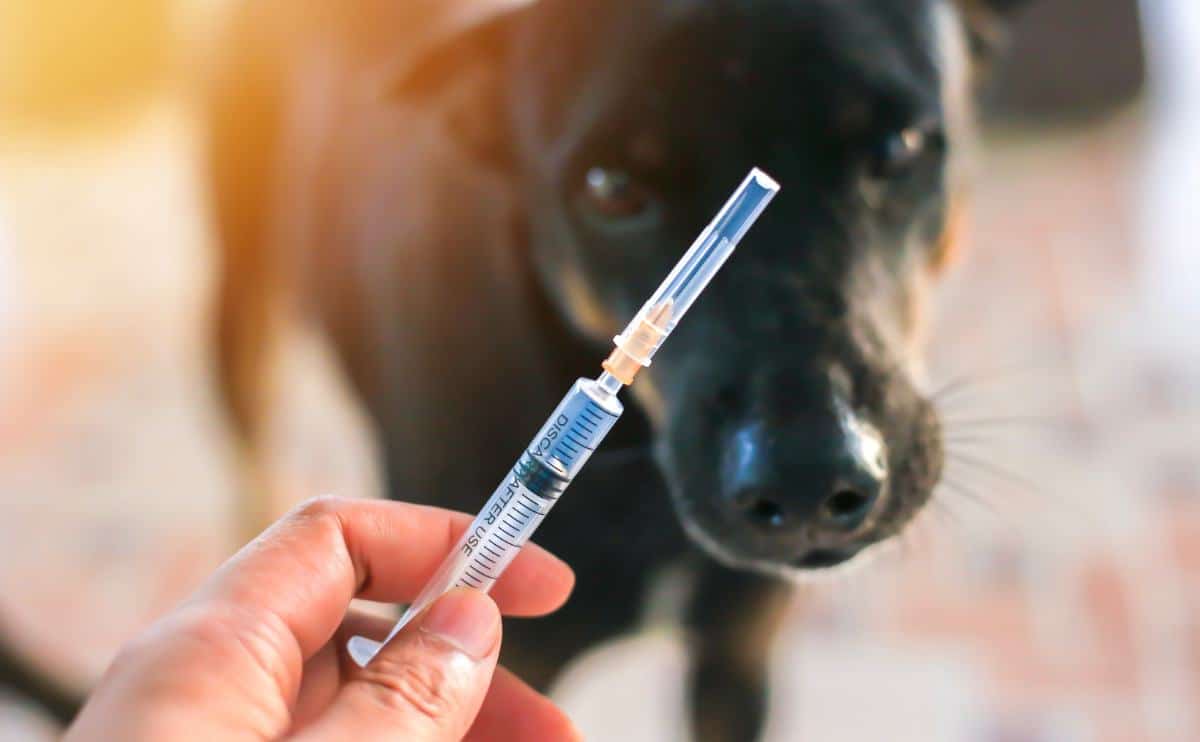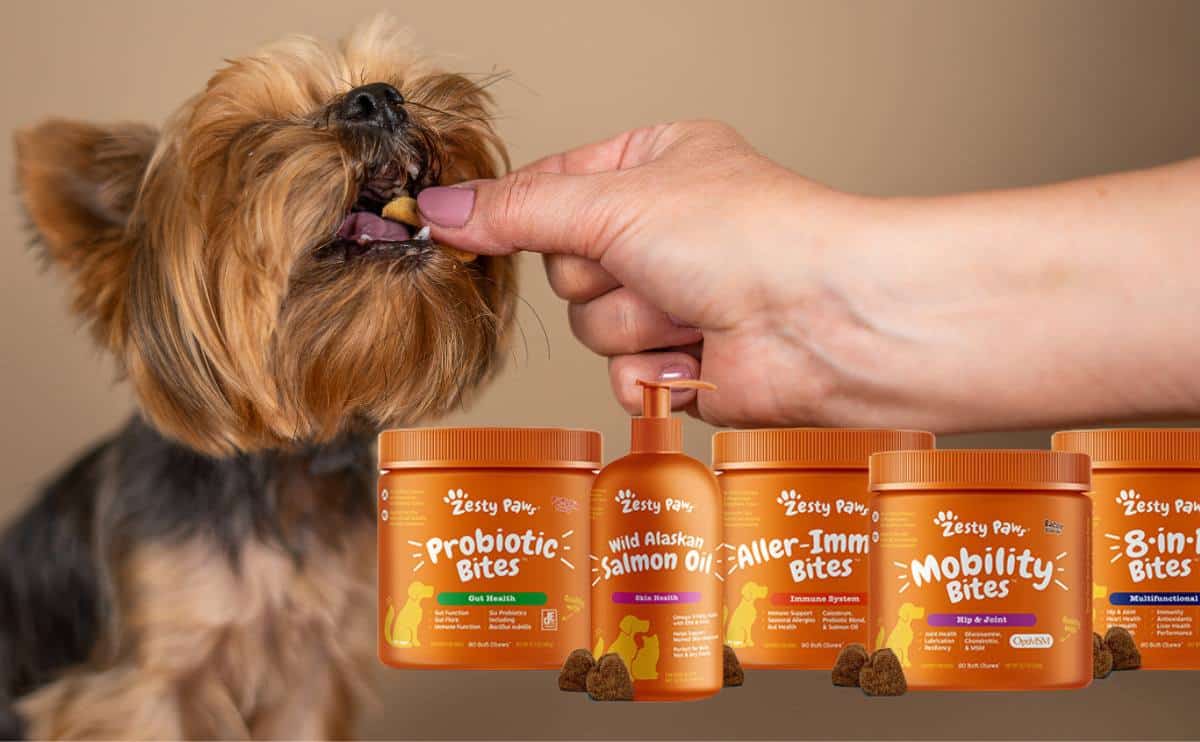What Are The Chances Of My Dog Dying During Spaying Or Neutering Surgery?
When you purchase through links on our site, we may earn a commission. Here’s how it works.

There are many benefits of spaying and neutering your dog, but some dog owners wonder if these surgical procedures are actually safe for their pups, including the risk of their dog dying during surgery. How safe are spaying and neutering? And what are some potential complications from these surgeries?
Table of Contents
What Is Spaying & Neutering?
Neutering (males) and spaying (females) are the terms used for surgical procedures to remove a dog’s reproductive organs. The veterinary technical terms and surgery include:
- Ovariohysterectomy: removal of the uterus and ovaries to prevent pregnancy (more common in the U.S.)
- Ovariectomy: removal of the ovaries while leaving the uterus intact
- Orchiectomy: removal of the testicles, rendering a male dog unable to reproduce
What Are The Chances Of My Dog Dying During Spaying Or Neutering Surgery?
As with any surgery, there are some risks. Your vet will put your dog under general anesthesia for spaying and neutering. However, spaying and neutering surgeries are widely considered very low risk — reported death rates from these procedures in dogs and cats are generally less than 0.1%.
What Are The Chances Of Complications During And After Surgery?
Here’s what some of the most frequently cited studies found about complication rates for male and female dogs. Keep in mind that most neuter and spay complications are typically minor and require little to no treatment.
Spay Complication Rates
One study of tracked complications at a U.S. veterinary teaching hospital found that the rates of postoperative spay complications were 14.1%, the intraoperative (during surgery) spay complications were 6.3%, and the total of all complications was 20.6%. Another study of five Canadian veterinary private practitioners found total complication rates of 22% for spaying female dogs.
While the studies above were relatively small, the United Kingdom’s Royal College of Veterinary Surgeons (RCVS) charity branch, RCVS Knowledge, collects data from practices around the country — a much larger data set than other statistics we’ve found. The statistics below for female dog spaying are based on 16,287 individual spay surgeries between 2005 and 2023. Their reported outcomes from spaying surgery included:
- 74.37% had no abnormalities or complications
- 13.25% had abnormalities, but no treatment was required
- 11.2% had complications that required treatment
- 1.01% had complications requiring surgical intervention
- 0.16% fatality
Neuter Complication Rates
A study of five Canadian veterinary private practitioners found a total complication rate (both during and after surgery) of 19% for neutering male dogs.
The RCVS Knowledge database’s reported outcomes from 17,056 dog neutering surgeries between 2005 and 2023 included:
- 76.69% had no abnormalities or complications
- 12.42% had abnormalities, but no treatment was required
- 10.27% had complications that required treatment
- 0.58% had complications requiring surgical intervention
- 0.04% fatality
What Are The Potential Complications After Spaying And Neutering A Dog?

The most common postoperative complications following spaying and neutering include:
- Infection of the incision
- Opening up of the incision/broken sutures
- Swelling under the incision site
- Skin infection
- Bleeding
- Urinary incontinence (mostly for females)
- Scrotal bruising and swelling (for males)
Many of these complications result from self-inflicted trauma to the surgical site from chewing, licking, and scratching or overactivity following surgery. An Elizabethan collar can help prevent self-inflicted trauma. If you notice any swelling, bleeding, discharge, or fluids oozing from your pup’s surgical site, contact your veterinarian immediately.
What Are The Risks Of Spaying A Dog?
Spaying a female dog involves more invasive surgery compared to neutering a male dog, so it does come with more potential concerns. “The exact technicalities of the operation will vary depending on the method (keyhole vs traditional incision), but all involve entering the animal’s abdomen surgically,” says Dr. Rebecca MacMillan BVetMed, BSAVA, PGCertSAM, MRCVS, a companion animal veterinarian in the U.K. “In humans, this would be seen as a pretty big deal.”
“One of the main risks seen with this procedure is excessive bleeding during the surgery, which is something I have seen and assisted colleagues with a few times in my career,” shares Dr. MacMillan. “Difficulties like bleeding are more likely to occur in overweight dogs, where abdominal fat obscures the surgeon’s view and makes tying the vessels trickier. Large and deep-chested dogs can also be a challenge. The good news is that bleeding can usually be brought under control again, but the patient’s anesthetic and recovery time could be affected.”
Dr. MacMillan says a less common complication is bleeding following the surgery, either due to a slipped ligature or because the dog has an underlying blood clotting issue. Also, wound breakdowns or infections are frequently seen in dogs that have not been appropriately rested after surgery.
“Allowing your pet to lick at their wound can also introduce infection, which is why I always send my patients home with a buster/lampshade collar or a medical pet vest,” says Dr. MacMillan. “Dogs with complications could require a second round of surgery for repair. One recent case I saw involved a dog that had a breakdown in the sutures holding their muscle layer together, so we had to re-operate to repair this hernia.”
Frequently Asked Questions
Here are some additional questions pup owners ask most often about the risks of spaying and neutering their pets. If you have another question, please ask us in our comments.
What Percentage Of Dogs Die From Spaying?
According to RCVS Knowledge, an estimated 0.16% of female dogs die from spay surgery. This statistic is based on over 16,000 individual surgeries around the U.K.
How Can I Prevent Complications?
While some complications are unavoidable, there are several ways you can help minimize the risk of them developing.
- Find a reputable, licensed surgical vet to perform the surgery.
- Follow all pre and postoperative instructions from your vet, including fasting before surgery and resting and cone requirements after surgery.
- Monitor your pup carefully post-surgery for any signs of illness, and check your pup’s surgical site to ensure that it’s healing properly. If you notice anything abnormal, contact your vet right away.
Should I Get My Dog Sterilized?
This brief video has some excellent information from a certified U.S. veterinarian on things to consider when deciding whether or not to spay or neuter your furry friend.
Learn More About Spaying And Neutering
There are many benefits of spaying and neutering your dog, including the improved overall health of your pup, an enhanced temperament, a declining homeless pet population, and more. In our comprehensive guide on spaying and neutering, you can learn more about the benefits, when to get your pup “fixed,” what the surgeries entail, how much it costs, and more.
If you’d like to move forward with getting your dog spayed or neutered, but the cost is concerning to you, we recommend considering a pet wellness plan. A wellness plan can help cover routine expenses like spaying and neutering surgery in addition to vaccinations, microchipping, and more. Depending on the company you choose, you can purchase it as an add-on to a pet insurance policy or on its own.
Why Trust Canine Journal?
Sally has over 20 years of experience in human health sciences communications, including 10 years as an expert on pet health conditions and treatment. She’s part of a dedicated team of canine professionals and long-time dog owners at Canine Journal. We spend countless hours researching the best care, training methods, and pet products, not only for our own pups but for all of our readers.



